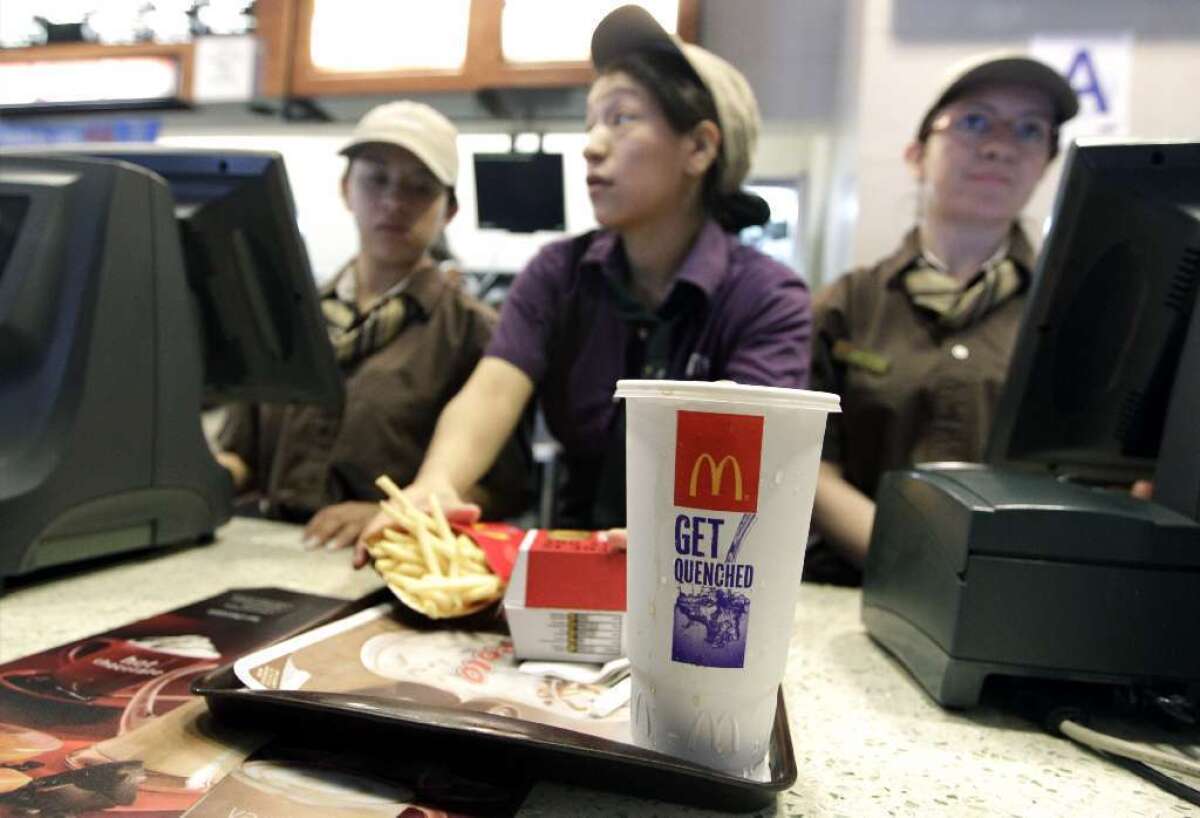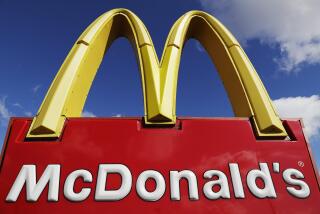Attempt to steer McDonald’s diners toward smaller meals backfires

You might think that customers buying their lunch at McDonald’s would order meals with fewer calories if someone handed them a slip of paper reminding them that women should eat no more than 650 calories at lunchtime and men should not exceed 800 calories. But you would be wrong.
Instead, researchers found that diners who received these supposedly helpful reminders actually purchased more calories than those who didn’t, according to a new study in the American Journal of Public Health.
The study authors — from the Department of Social and Decision Sciences at Carnegie Mellon University in Pittsburgh and Cornell University’s Department of Applied Economics and Management — stood outside two McDonald’s restaurants in Manhattan and Brooklyn. They approached diners on their way in and asked them to save their receipts and conduct a short interview after they ate their lunch.
In addition, some diners were handed information on the number of calories men and women should eat at lunch, and some were given information on the total number of calories men and women should eat in an entire day. A control group was not given any advice on the calorie front.
When they had finished their meals, diners were asked to estimate how many calories they had consumed. Those estimates were compared with the actual calories purchased, according to the receipts. The researchers also collected demographic information like age, gender, ZIP Code of residence and height and weight (to calculate each person’s body mass index).
Among the 1,094 diners included in the study analysis, the women who ate lunch (not just a drink or dessert) purchased an average of 824 calories and the men purchased 890 calories. Assuming they ate and drank everything they bought, the men consumed 11% more calories than they should have, on average. The women splurged even more — they downed 27% more calories than recommended, on average.
The researchers expected that the diners who got slips of papers with calorie advice to order lower-calorie meals than the diners who got no such guidance. Instead, they found that the recommendations had no effect on the way customers used the calorie information posted on menus.
Even worse, diners who got the slips of papers ordered higher-calorie entrees than diners who didn’t — 49 more calories, on average. The difference wasn’t great enough to be statistically significant, but it was close, according to the study.
It’s not exactly shocking that giving people the information they needed to order the right amount of food didn’t work. After all, it’s hard for anyone to stick to the rules when confronted with the aroma of McDonald’s French fries. But how did this seemingly sensible idea wind up making things worse?
The study authors have a theory. Perhaps their plan backfired because people compared the calorie count of their entree to the calorie information on their slip of paper and got “a false sense of staying within the calorie allowance,” they wrote. That, in turn, may have made them feel safe ordering a bigger soda or to supersize their fries. A Big Mac packs 550 calories, which doesn’t sound so bad, until you add in 500 calories for large fries and 280 calories for a large Coke.
A previous study that tested the value of posting calorie information on menus found that it did steer diners toward lower-calorie meals. But in that study, conducted at a Subway sandwich shop, it only worked for customers who had a healthy BMI, not those who were overweight.
The authors of the new study speculated that they got different results because Subway and McDonald’s “have different reputations for healthful fare, and, as a result, may attract different clientele.”
But that hardly made them optimistic that their approach would work better under different circumstances. “The results provide little hope that calorie recommendations will salvage the apparent weak or nonexistent effect of menu labeling,” they concluded.
Return to Science Now.






